
Chinese Science Bulletin-Chinese
Scope & Guideline
Unveiling Breakthroughs in Multidisciplinary Science
Introduction
Aims and Scopes
- Interdisciplinary Research:
The journal supports research that spans multiple scientific disciplines, encouraging collaboration among scientists from different fields to address complex scientific challenges. - Innovative Methodologies:
Focus on novel research techniques and methodologies that advance scientific inquiry and contribute to the development of new technologies. - Environmental and Ecological Studies:
Research on environmental science, ecology, and the impacts of climate change is a core area, reflecting the journal's commitment to addressing global environmental challenges. - Health and Medical Research:
The journal publishes studies related to health, medicine, and public health, emphasizing research that contributes to health improvements and disease prevention. - Advanced Materials Science:
A significant focus on the properties and applications of advanced materials, including nanomaterials, biomaterials, and functional materials, underpins many publications. - Energy and Sustainability:
Research related to energy production, conversion, and sustainability practices is emphasized, particularly in the context of China's dual carbon goals. - Cultural and Historical Perspectives:
The journal also includes studies that provide cultural and historical insights, particularly related to the scientific advancements in China.
Trending and Emerging
- Climate Change and Environmental Science:
A growing emphasis on research related to climate change, sustainability, and environmental management, indicating a rising awareness and urgency in addressing ecological issues. - Nanotechnology and Advanced Materials:
Increased focus on nanotechnology, including the development and application of nanomaterials for various industries, particularly in energy and health sectors. - Artificial Intelligence and Machine Learning Applications:
A notable trend in applying AI and machine learning techniques across various scientific domains, including medical research, environmental monitoring, and materials science. - Biotechnology and Synthetic Biology:
Emerging interest in biotechnology and synthetic biology, particularly in developing innovative solutions for health, agriculture, and environmental sustainability. - Health Technology and Digital Health Solutions:
Research on health technology, including telemedicine, digital health applications, and innovative therapeutic methods, is gaining more attention. - Interdisciplinary Approaches to Science:
There is a trend towards interdisciplinary research that combines insights from various fields, fostering innovation and comprehensive solutions to complex problems.
Declining or Waning
- Traditional Agricultural Practices:
Research related to traditional agricultural practices and their scientific evaluations is becoming less common, possibly due to a shift towards more modern, technology-driven agricultural methods. - Basic Physics Research:
There has been a noticeable decrease in publications focusing solely on fundamental physics, as interdisciplinary approaches that integrate physics with other sciences gain more attention. - Conventional Biomedical Studies:
While health-related research remains vital, studies focused on conventional biomedical approaches without a strong emphasis on innovation or technology integration are becoming less frequent. - Historical Geoscience:
Research in historical geoscience and paleontology has seen a decline, likely due to an increased focus on contemporary environmental issues and applied geosciences. - Static Laboratory Studies:
There is a waning interest in purely laboratory-based studies without real-world applications, as the journal shifts towards research with practical implications.
Similar Journals

Journal for General Philosophy of Science
Elevating Scholarly Conversations on Science and PhilosophyJournal for General Philosophy of Science, published by Springer, stands as a pivotal resource in the fields of History and Philosophy of Science, as well as general Philosophy. With an impressive Q1 ranking in its categories and a solid reputation reflected in its Scopus rankings, this journal provides a robust platform for scholarly discourse and advancement in philosophical inquiry regarding science. The journal's commitment to quality is evident, catering to researchers, professionals, and students interested in the critical examination of scientific methods, theories, and their implications. While it operates on a subscription basis, the journal is dedicated to fostering a deeper understanding of philosophical issues surrounding scientific practices from 1980 through 2024. Operating out of the picturesque Netherlands, specifically from VAN GODEWIJCKSTRAAT 30, 3311 GZ DORDRECHT, the journal continues to encourage innovative thinking and interdisciplinary dialogue, underscoring its significance in academia today.
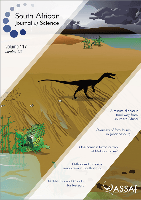
SOUTH AFRICAN JOURNAL OF SCIENCE
Fostering Collaboration Across Scientific LandscapesThe SOUTH AFRICAN JOURNAL OF SCIENCE, published by the Academy of Science of South Africa (ASSAf), is a prestigious open-access journal dedicated to the advancement and dissemination of scientific knowledge across various disciplines. Since its inception in 1973, the journal has played a pivotal role in fostering scientific communication within South Africa and beyond, ranking in the Q2 and Q3 quartiles across critical categories such as Agricultural and Biological Sciences, Biochemistry, Genetics and Molecular Biology, and Earth and Planetary Sciences as of 2023. With an ISSN of 0038-2353 and E-ISSN 1996-7489, this journal embraces modern publishing practices, having adopted an open-access model in 2009, which ensures that research is readily accessible to a global audience. The journal aims to promote interdisciplinary research and facilitate collaboration among scientists, making it an essential resource for researchers, professionals, and students eager to contribute to and learn from the dynamic landscape of scientific inquiry. For further information, collaborators and correspondents may reach out to the journal through its contact address: PO BOX 72135, LYNWOOD RIDGE 0040, SOUTH AFRICA.
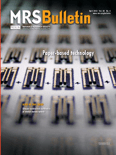
MRS BULLETIN
Advancing the Frontiers of Materials Science.MRS BULLETIN is a distinguished academic journal published by Springer Heidelberg, focusing on groundbreaking research in the fields of condensed matter physics, materials science, and theoretical chemistry. With an impressive impact factor and categorizations in the top quartile (Q1) for 2023, it ranks among the leading journals in its field, demonstrating its critical role in advancing scientific knowledge and innovation. Operating from Heidelberg, Germany, this journal serves as an essential platform for the dissemination of high-quality research, synthesizing pivotal findings and discussions that bridge academia and industry. Researchers, professionals, and students will find invaluable insights within its pages, showcasing developments that are vital for fostering innovation in materials and physical sciences. Although it is not an open access journal, its rigorous peer-review process ensures the highest standards of scholarly communication, securing its reputation as a premier resource for current trends and breakthroughs.
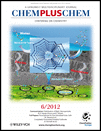
ChemPlusChem
Exploring the Depths of Chemistry for Global ImpactChemPlusChem is a premier journal published by WILEY-V C H VERLAG GMBH, dedicated to the vibrant field of chemistry. With an ISSN of 2192-6506 and an impressive Q1 ranking in Scopus's 2023 category for miscellaneous chemistry, this journal serves as a significant platform for the dissemination of high-quality research and innovative findings. Since its inception in 2012, ChemPlusChem has fostered interdisciplinary collaborations, encapsulating a wide array of topics within chemistry that facilitate scientific advancement and education. The journal features a robust open access system, enabling extensive visibility for authors while providing easy-to-access resources for researchers, professionals, and students globally. Located in Weinheim, Germany, ChemPlusChem reflects international standards and ambitions, striving to enrich the global scientific community through rigorous research and engaging scientific discourse.

Metode Science Studies Journal
Pioneering New Perspectives in Science StudiesMetode Science Studies Journal, published by UNIV VALENCIA, BOTANICAL GARDEN UV, is an esteemed open-access journal dedicated to advancing scholarly discourse in the fields of history and philosophy of science and multidisciplinary studies. Since its inception in 2013, the journal has positioned itself as a vital resource for researchers, professionals, and students, fostering an environment for innovative research and cross-disciplinary dialogue. Based in the vibrant city of Valencia, Spain, this journal aims to publish high-quality articles that explore the intricate relationships between scientific practices and philosophical inquiries. With a current impact factor demonstrating its relevance in the academic community, the journal is indexed in Scopus, ranking in the 52nd percentile for history and philosophy of science and the 33rd percentile for multidisciplinary studies. Scholars can access a breadth of research outputs that span from 2015 to 2024, thereby contributing significantly to the intellectual landscape of the respective fields.
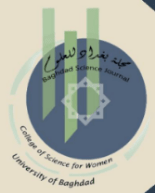
Baghdad Science Journal
Elevating Research Standards for a Brighter TomorrowThe Baghdad Science Journal (ISSN: 2078-8665, E-ISSN: 2411-7986), published by the COLL SCIENCE WOMEN, UNIVERSITY OF BAGHDAD, is a pivotal peer-reviewed open-access journal dedicated to a diverse array of scientific disciplines. Since its inception in 2004, it has established itself as a leading platform for disseminating innovative research in areas including Agricultural and Biological Sciences, Biochemistry, Genetics and Molecular Biology, Chemistry, Computer Science, Mathematics, and Physics. The journal has consistently achieved commendable rankings in the Scopus database, reflecting its commitment to quality and relevance in academic research. With a Q2 classification in Agricultural and Biological Sciences and Q3 classifications in several other categories as of 2023, the journal has become an invaluable resource for researchers, professionals, and students eager to contribute to scientific advancement. Based in Iraq, the Baghdad Science Journal serves as a bridge for global scientific communication, encouraging collaboration and providing access to groundbreaking discoveries.
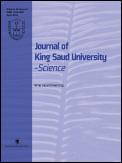
JOURNAL OF KING SAUD UNIVERSITY SCIENCE
Elevating Knowledge Across Disciplines Since 1994JOURNAL OF KING SAUD UNIVERSITY SCIENCE, published by Elsevier, stands as a key resource in the field of multidisciplinary research, featuring a notable Impact Factor evident from its 2023 Q1 categorization and impressive Scopus rank of #16 out of 171, placing it in the top 10% of its category. Since its transition to Open Access in 2009, this journal has fostered greater accessibility to pioneering research outcomes and innovative methodologies, enhancing knowledge dissemination globally. With an established history dating back to 1994 and an ongoing commitment to advancing scientific exploration until 2024, it serves as a vital platform for researchers, professionals, and students alike. This journal aims to publish high-quality articles that bridge various scientific disciplines, thereby encouraging collaboration and innovation. With its base in the Netherlands, JOURNAL OF KING SAUD UNIVERSITY SCIENCE not only reflects the academic rigor of its publisher but also engages a diverse international readership, making it an indispensable tool for the modern scientist.

Heliyon
Empowering scholars through accessible, high-quality research.Heliyon is a distinguished open access journal published by CELL PRESS, headquartered in the Netherlands, that has been advancing the dissemination of scientific knowledge since 2015. With its innovative multidisciplinary approach, Heliyon has garnered significant recognition in the academic community, maintaining a prominent position as evidenced by its Q1 ranking in the multidisciplinary category for 2023, placing it at the forefront of its field. It boasts an impressive Scopus rank of #31 out of 171 journals, ranking in the 82nd percentile, underscoring its influence and reach among scholars and practitioners alike. Committed to providing a platform for diverse research, Heliyon not only facilitates the publication of high-quality research but also ensures that it is broadly accessible, enhancing visibility and engagement from a global audience. This journal is an invaluable resource for researchers, professionals, and students dedicated to interdisciplinary collaboration and innovation.
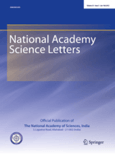
NATIONAL ACADEMY SCIENCE LETTERS-INDIA
Connecting Ideas, Inspiring Innovations in EngineeringNATIONAL ACADEMY SCIENCE LETTERS-INDIA, published by SPRINGER INDIA, is an esteemed peer-reviewed journal dedicated to advancing knowledge in the field of engineering and its diverse applications. With an ISSN of 0250-541X and an E-ISSN of 2250-1754, this journal serves as a vital platform for researchers and professionals aiming to disseminate their high-quality research findings. Covering a range of topics that intersect engineering disciplines, it holds a respectable Q3 quartile ranking in the Engineering (miscellaneous) category as of 2023, indicating its significant role in the academic community. Located in New Delhi, India, the journal not only provides a valuable forum for innovative ideas from both emerging and established scholars but also emphasizes the importance of scientific research in addressing contemporary global challenges. While currently not offering open access, the NATIONAL ACADEMY SCIENCE LETTERS-INDIA strives to support the development of future technologies and methodologies, inviting contributions that will influence the engineering landscape for years to come.

Scientific Drilling
Elevating drilling science to new heights of innovation.Scientific Drilling is a premier open-access journal published by COPERNICUS GESELLSCHAFT MBH, dedicated to advancing the field of drilling science and technology since its inception in 2005. With an ISSN of 1816-8957 and an E-ISSN of 1816-3459, this journal serves as a vital platform for academics and professionals within the Energy Engineering and Mechanical Engineering disciplines, evidenced by its rankings in the 2023 quartiles as Q2 in both categories. Located in Göttingen, Germany, the journal has embraced a commitment to disseminating high-quality research that addresses current challenges in energy utilization, drilling techniques, and engineering methodologies. With impact factors that reflect its credibility and reach, and an accessible format that encourages the sharing of knowledge across borders, Scientific Drilling is poised to be a cornerstone for researchers, professionals, and students who seek to explore innovative solutions in engineering and technology. Encompassing a wide range of topics under its convergence years from 2005 to 2024, the journal remains at the forefront of scientific exploration and practical application in the field.